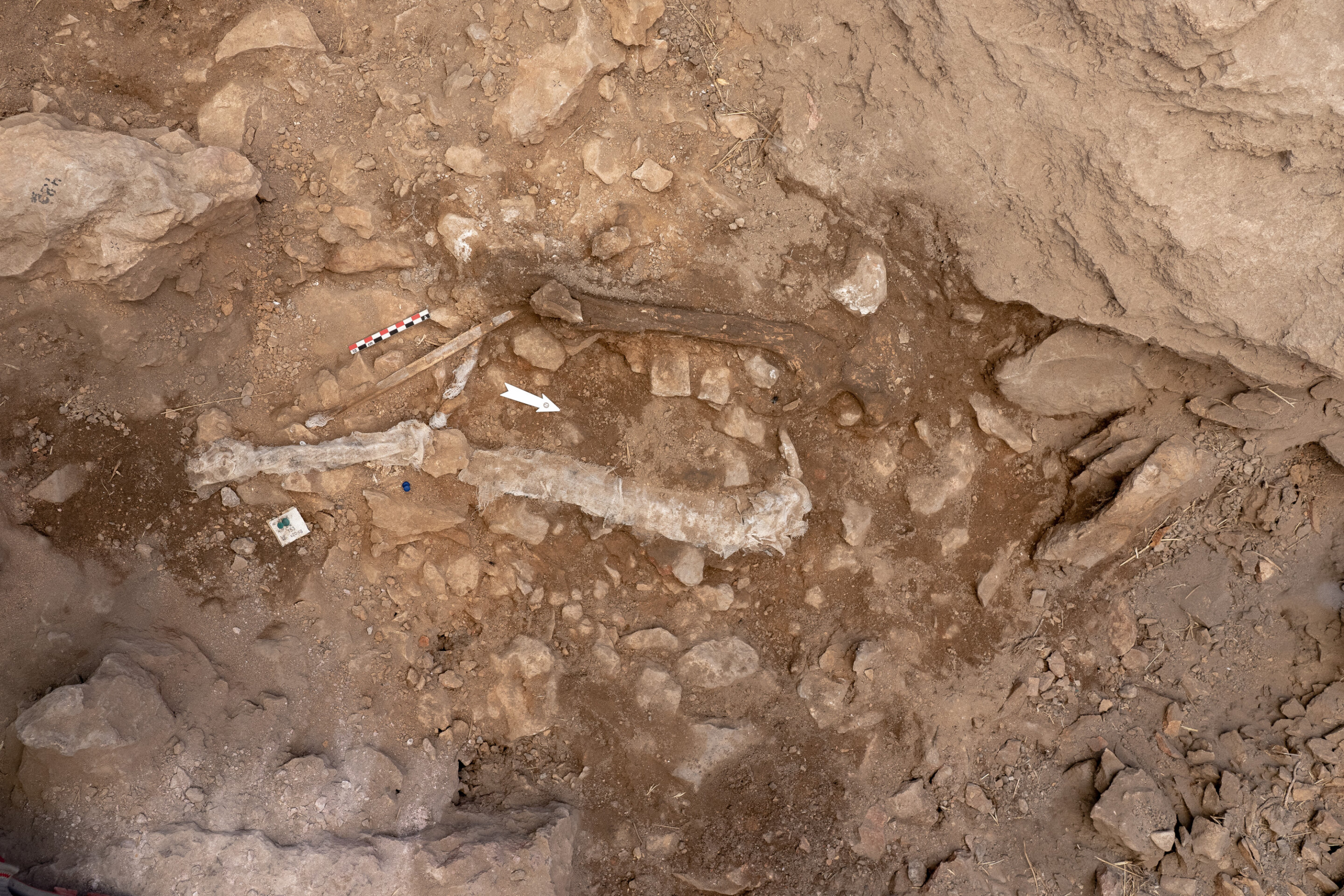Scientists at the Centro Nacional de Investigación sobre la Evolución Humana (CENIEH) have participated in the discovery, at the Cova Gran de Santa Linya site (La Noguera, Lleida), of the remains of a female attributed to H. sapiens, who lived in the northeast of the Iberian Peninsula at the end of the Upper Paleolithic, around 14,000 years ago, as shown by the carbon-14 dating of the sediments in the natural receptacle in which her remains were discovered.
Cova Gran preserves innumerable buried vestiges of the sediments comprising it, which make it possible to reconstruct the history of the populations who lived in the Pre-Pyrenees of Lleida over the last 50,000 years, from Neanderthals and the first Homo sapiens up to the earliest farmers.
The team of researchers from the Archaeological Heritage Center at the Universitat Autònoma de Barcelona (CEPARQ-UAB) and the CENIEH, which has been studying Cova Gran since its discovery in 2002, had previously found material records from between 45,000 and 4000 years ago. Nevertheless, no bone remains of the individuals who inhabited it had been located until the 2020 excavation campaign.
The CENIEH researcher Alfonso Benito Calvo said, we recovered bone remains which definitely belonged to a human skeleton, and were still partly connected, two meters below the ground of a side area of the excavation. A location that didn't presage the appearance of this kind of remains.
The initial paleoanthropological characterization of all the remains recovered, which was announced this week, suggests that the pelvic girdle is from an adult woman, possibly a small one, and who has been dubbed Linya, the La Noguera woman. The remains also include two femurs, one of them still attached to the pelvis, as well as long bones from the upper limbs (humerus, radius/ulna) and lower ones (tibia and fibula), and scattered metapodials and phalanges. The skull and axial skeleton (vertebrae and ribs), although present, are poorly represented.
Linya was found in a space considered to be a natural receptacle, formed by several large blocks which had fallen from the shelter roof. Linya's entire body was deposited in this space, and given the arrangement of the femurs, it rested directly on the ground in the supine position.
Currently, the team is studying elements of what may be grave goods, a habitual practice in H. sapiens burials. The sediment from the space inside the blocks is being sampled to determine the processes the body was subjected to and to look for microresidues that could indicate whether it was covered with skins or plant fibers, which would justify an intention of depositing the cadaver without needing to excavate a grave.
Among hunter-gatherers, funerary treatment could suggest various possibilities, ranging from intentional burial to secondary burial, depositing only part of the body, cannibalism, or accidental death.
Benito Calvo said, these scenarios will be evaluated in light of the results furnished by the excavation of the space where the remains appeared.
The Cova Gran de Santa Linya site is considered to be key to the study of human presence in the northeastern Iberian Peninsula. Covering over 2500 m2, it is one of the few sites in the Mediterranean region where traces of "transition" moments have been identified, such as that of the last Neanderthals (45,000 years ago) and the advent of the first modern humans (between 37,000 and 30,000 years ago), the continuance of the latter during the Last Glacial Maximum (20,000 to 15,000 years ago) and the appearance of the first farmers (7000 and 4000 years ago).
Benito Calvo said, prehistoric remains of modern humans in the Iberian Peninsula are very scarce. The study of Linya will let us learn more about what the hunter-gatherers of the northeast of the Peninsula were like, and how they live.




0 Comments